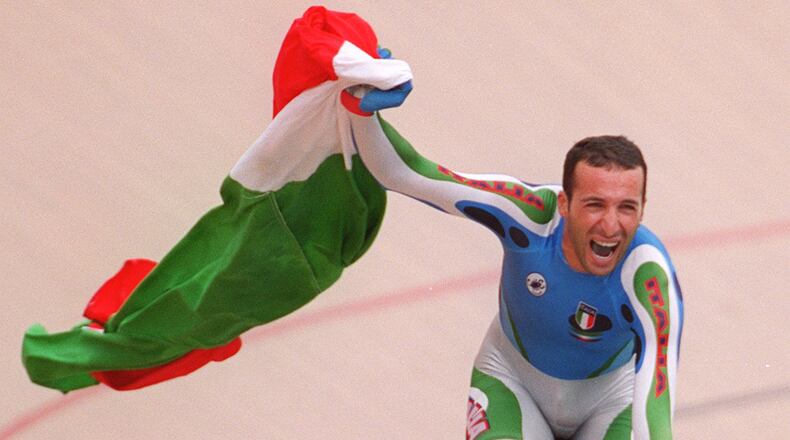Editor’s Note: This story was published in the Atlanta Journal-Constitution on Friday, July 26, 1996, after Italian cyclists set records using a new racing style. This is a daily take of the events that transpired on the 25th anniversary of the Games in Atlanta.
The Italians have been turning in super performances in the first two days of track racing, and the word is their “Superman” riding position has a lot to do with it.
With their arms stretched out front on specially designed handle bars, the Italians have taken the expensive and highly technical evolution of bicycles a notch higher.
And they have been faster than a speeding bullet at the Stone Mountain Velodrome.
Andrea Colinelli set two world records in individual pursuit heats Wednesday before winning the gold medal Thursday. And teammate Antonella Bellutti set an Olympic record in the women’s pursuit Thursday despite a misstep at the start that cost a couple of seconds.
Both use the Superman position.
Credit: AJC
Credit: AJC
“It seems like that position is superior,” said Mark Gorski, who won the gold medal for the United States in the match sprint in 1984.
“That’s why Superman flew like that,” said U.S. individual pursuiter Kent Bostick, who failed to advance out of Wednesday’s first round.
Colinelli said wind tunnel tests have proven the new position aerodynamically superior.
U.S. Olympic coach Chris Carmichael said he considered the position when developing the $1 million Super Bike 2, which was unveiled at these Games, but decided to stick with the traditional position — arms bent, forearms resting on aerobars that jut forward from the handlebars — because American riders were used to it.
That may change after the Olympics.
“We’ll look at it and make some modifications,” Carmichael said.
That will be too late for several Americans who failed in the qualifying rounds, including two more Thursday. Connie Paraskevin-Young, considered a medal contender, finished her five-time Olympic career with a defeat in the first round of the women’s match sprint. First-timer Bill Clay was eliminated in the men’s match sprint.
And world champion pursuiter Rebecca Twigg, one of America’s best hopes for a cycling gold medal, did not look strong in Thursday’s qualification round.
“Not a bad ride, not a good ride,” Carmichael said of Twigg’s performance.
Credit: AJC
Credit: AJC
Twigg was so disappointed with her fourth-place finish that she declined to meet with the press.
The sole good news for the Americans came from sprinter Marty Nothstein, who advanced to the third round with a spectacular ride against a Slovakian.
But it was the Italians who were the talk of Stone Mountain.
“It was pure pleasure to the eyes to see a human being move that quickly on a bicycle,” bronze medalist Bradley McGee of Australia said of Colinelli.
Phillipe Ermenault of France won the silver.
Day 6: Dream Team shows aggressive style | Day 8: Gail Devers sets 100m pace
About the Author
Keep Reading
The Latest
Featured




